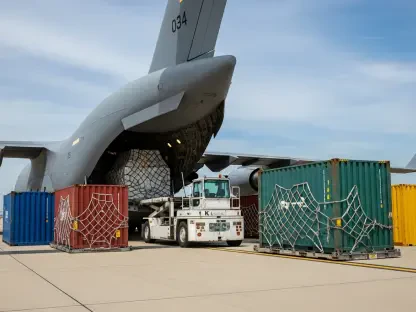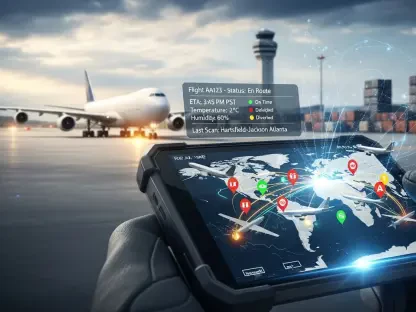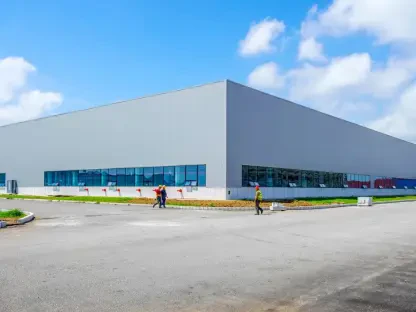The Internet of Things (IoT) is revolutionizing warehouse management, driving unprecedented efficiency and accuracy across operations. The global market for IoT solutions in this field, valued at $6.7 billion in 2023, is projected to reach a remarkable $17.8 billion by 2030. This impressive growth trajectory is fueled by the increasing demand for real-time inventory tracking, advancements in automation technologies, and the complex nature of modern supply chains. As businesses continue to grapple with the challenges of managing vast inventories and ensuring timely delivery, the integration of IoT technologies offers a transformative solution, making warehouse operations more efficient and responsive.
The Importance of Real-Time Inventory Tracking
Real-time inventory tracking has become a cornerstone of modern warehouse management. IoT-powered devices, such as RFID tags, smart shelves, and connected sensors, enable continuous monitoring and data collection on inventory levels, asset location, and equipment performance. This technology reduces errors, optimizes storage space, and enhances operational efficiencies by allowing managers to make data-driven decisions. The ability to track inventory in real-time helps warehouses maintain accurate stock levels, preventing overstocking and stockouts. This is particularly crucial in industries with high turnover rates, where timely replenishment is essential.
Additionally, real-time tracking provides valuable insights into inventory movement patterns, helping to streamline processes and reduce operational costs. IoT solutions also facilitate better asset management by providing real-time data on the location and condition of equipment. This ensures that assets are utilized efficiently and maintained properly, reducing downtime and extending their lifespan. Overall, real-time inventory tracking is a game-changer for warehouse management, offering significant benefits in terms of accuracy, efficiency, and cost savings.
Technological Advancements Driving IoT Adoption
The integration of advanced technologies such as robotics, AI-driven analytics, and RFID systems has significantly influenced the adoption of IoT in warehouse management. Automated guided vehicles (AGVs) and robotic systems equipped with IoT sensors are used to transport goods within warehouses, minimizing manual labor and increasing efficiency. AI analytics platforms play a crucial role in optimizing warehouse layouts, predicting demand, and enhancing inventory management. These platforms analyze vast amounts of data to identify patterns and trends, enabling warehouses to make informed decisions and improve their operations.
The use of AI-driven analytics also helps in forecasting demand accurately, ensuring that warehouses are well-prepared to meet customer needs. RFID systems are another key technology driving IoT adoption in warehouses. These systems provide real-time visibility into inventory levels and locations, making it easier to track and manage stock. RFID tags can be attached to individual items, pallets, or containers, allowing for seamless tracking throughout the supply chain. The combination of these advanced technologies is revolutionizing warehouse management, making it more efficient and responsive to the demands of modern logistics.
E-Commerce and Omnichannel Retailing
The rapid expansion of e-commerce has heightened the necessity for streamlined warehouse operations. IoT solutions are pivotal in reducing errors, improving order accuracy, and ensuring quicker and more efficient order fulfillment. As e-commerce continues to grow, the demand for robust IoT-enabled warehouse management systems is expected to rise. E-commerce companies require precise and efficient order fulfillment processes to meet customer expectations. IoT solutions help achieve this by providing real-time data on inventory levels and order status, enabling warehouses to process orders quickly and accurately.
This is particularly important in the context of omnichannel retailing, where customers expect seamless experiences across multiple channels. The integration of IoT in warehouse management also supports the growing trend of same-day and next-day delivery. By optimizing inventory management and streamlining order processing, IoT solutions enable warehouses to fulfill orders faster, meeting the high demands of e-commerce customers. The continued growth of e-commerce is a significant driver for the adoption of IoT in warehouse management, highlighting the importance of these technologies in modern logistics.
Enhancing Supply Chain Visibility and Optimization
IoT technologies significantly enhance supply chain visibility, providing essential real-time data required to improve logistics and inventory management. This visibility helps in the optimization of processes, reduction of operational costs, minimization of downtime, and overall improvement in supply chain efficiency. Real-time data from IoT devices allows warehouses to monitor the movement of goods throughout the supply chain, from production to delivery. This visibility helps identify bottlenecks and inefficiencies, enabling warehouses to address issues promptly and improve overall performance.
Enhanced supply chain visibility also supports better decision-making, as managers have access to accurate and up-to-date information. IoT solutions also play a crucial role in predictive maintenance, helping warehouses avoid unexpected equipment failures and downtime. By monitoring the condition of equipment in real-time, IoT devices can detect potential issues before they become critical, allowing for timely maintenance and repairs. This proactive approach reduces downtime and extends the lifespan of equipment, contributing to overall cost savings and efficiency.
Regional Growth and Market Dynamics
The Internet of Things (IoT) is transforming warehouse management, significantly boosting efficiency and accuracy throughout operations. The global market for IoT solutions in this sector, valued at $6.7 billion in 2023, is projected to soar to an impressive $17.8 billion by 2030. This strong growth is driven by the rising need for real-time inventory tracking, the rapid development of automation technologies, and the increasingly complex nature of modern supply chains. Companies are continuously facing challenges related to managing extensive inventories and ensuring timely deliveries, and IoT technologies present an innovative solution that enhances efficiency and responsiveness in warehouse operations. Integrating IoT systems allows businesses to monitor inventory in real-time, automate various tasks, and streamline supply chain processes. As a result, warehouse operations become faster, more accurate, and far more cost-effective. This technological advancement is not just a trend but a crucial step forward for companies aiming to stay competitive in today’s fast-paced market environment.









